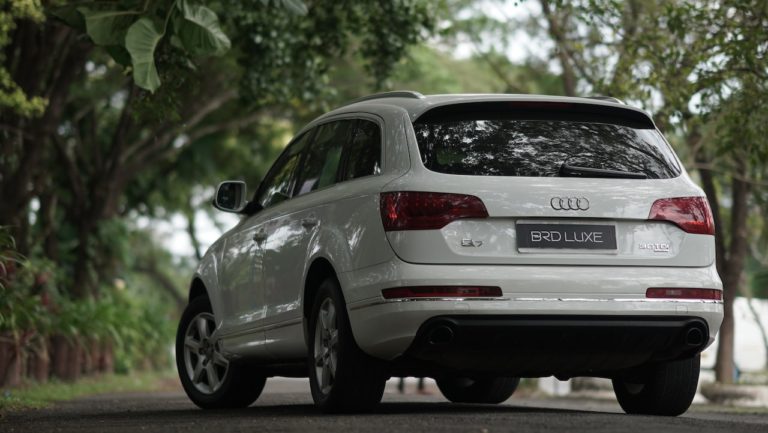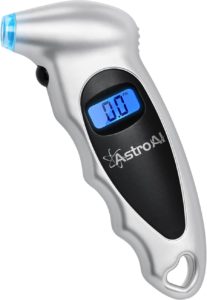What is TPMS?
A tire pressure monitoring system (TPMS) is a safety feature in modern vehicles that monitors the air pressure in the tires and alerts the driver if the pressure drops below a certain level. TPMS can be direct or indirect. Direct TPMS uses sensors in each tire to send the pressure readings to the vehicle’s computer system. The Audi Q7 uses Indirect TPMS which measures the rotational speed of each wheel and compares the readings to determine if a tire is underinflated. Proper tire pressure is important for safe driving, fuel efficiency, and tire longevity. TPMS helps to ensure that tires are inflated to the recommended level and reduces the risk of accidents caused by underinflated tires.
All of the following information is applicable to all Audi Q7 Models such as the Audi SQ7.
Audi Q7 Tire Pressure Light Reset Procedure
2017-2020 Version
Select the MENU button on the touchpad.
Scroll over and select CAR.
Push the scroll wheel to the left and select the RED ICON with 3 lines. (next to comfort in ride control menu)
Scroll down and select SERVICING & CHECKS.
Select TIRE PRESSURE INDICATOR.
Select STORE TIRE PRESSURES.
Select YES, STORE NOW.
2010-2017 Version
Select the CAR button. (under the shifter)
Select SERVICING & CHECKS.
Select TIRE PRESSURE MONITORING.
Select STORE TIRE PRESSURE.
Select YES, STORE NOW.
How Does the Audi Q7/SQ7 TPMS Work?
The Audi Q7 uses an indirect TPMS.
The system monitors the rotational speed of each wheel using the ABS sensors.
When tire pressure drops below the recommended level, the diameter of the tire decreases, causing the rotational speed to increase.
The system compares the rotational speed of each wheel and looks for a significant difference.
If there is a significant difference, it triggers a warning light on the dashboard.
When to Reset Audi Q7/SQ7 TPMS?
After adjusting the tire pressure to the recommended level.
After tire rotations, wheel balances or wheel alignments.
After replacing one or more tires.
If the vehicle battery dies or is jumped the TPMS needs to be reset.
If any part of the ABS or wheel speed sensors are replaced.
What are Common Causes for Tire Pressure Light to Turn On?
Low tire pressure due to a puncture, slow tire leak or rim/wheel crack. Any of these can cause the diameter of the tire to decrease, leading to a difference in rotational speed that triggers the tire warning light.
Extreme temperature changes can cause tire pressure to fluctuate up or down.
An issue with the vehicle’s on board computer.
Mismatched tire sizes or tire types can cause changes in wheel rotation speeds. Always use OEM size wheels and tires to prevent this problem.
Faulty ABS or wheel speed sensors will trigger the TPMS warning light.
Excess vehicle weight or load will impact the wheels rotational speed causing a TPMS warning light.
What Happens When Tires are Underinflated?
When tires are underinflated in an Audi Q7 or SQ7, several negative effects can occur. Firstly, underinflated tires can lead to increased wear and tear, which can shorten the lifespan of the tires and require more frequent replacements. Secondly, underinflated tires can decrease fuel efficiency. This is because more energy is required to move the car with less air in the tires. This can result in higher fuel consumption and increased expenses for the driver. Finally, underinflated tires can negatively affect the car’s handling, stability and braking making it more difficult to control and increasing the risk of accidents. As such, it is essential to regularly check and maintain proper tire pressure to ensure safe and efficient driving!
Please note that this blog post contains Amazon affiliate links. This means that if you make a purchase through one of these links, the author of the blog may earn a small commission at no extra cost to you. The author only recommends products that they personally use and believe in. Thank you for supporting this blog.



